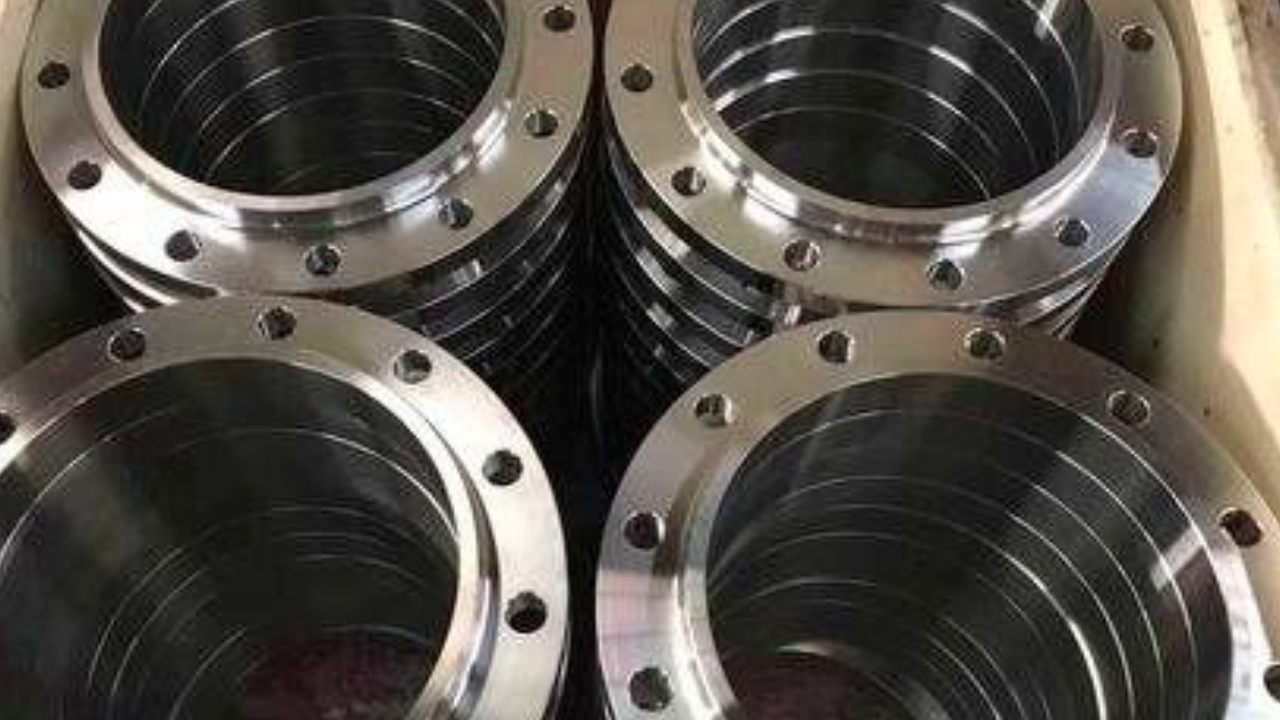Pipes, valves, pumps, and other equipment are connected by flanges which are essential parts of piping systems. They offer a way to join pipe sections or connect pipes to different parts, making assembly, disassembly, and maintenance simpler. Flanges are utilized in many different sectors and applications; the particular needs of the system are taken into consideration when choosing the type and design of the flange.
Properly selected and installed flanges contribute to the overall integrity and safety of the piping system. They ensure that the system operates efficiently, preventing leaks and minimizing the risk of accidents or environmental damage.
Classification of Flanges Types
Flanges come in various types, each designed for specific applications and requirements. Here we will explore the classification of flange types, considering their shapes, faces, and applications.
Weld Neck Flanges
These are attached to the weld characterized by their long tapered neck, which is welded to the pipe. This design provides excellent structural strength and is particularly suitable for high-pressure and high-temperature applications. The weld neck flange is preferred in critical systems where stress and structural integrity are paramount. The flange's raised face helps prevent leakage, and it is commonly used in industries such as oil and gas, chemical processing, and power generation.
Slip-On Flanges
Slip-on flanges have a slightly larger inner diameter than the pipe, allowing the pipe to slip into the flange. These flanges are then secured with a filet weld on the backside. Slip-on flanges are easier to align and are commonly used in low-pressure and non-critical applications. They are cost-effective and are frequently employed in industries such as water treatment, HVAC systems, and general plumbing.
Socket Weld Flanges
Socket Weld Flanges have a socket-like design that accommodates the pipe's end. The pipe is inserted into the socket and then filet-welded to provide a strong connection. Socket weld flanges are suitable for applications with smaller pipe sizes and moderate pressures. They are commonly used in systems where frequent disassembly is not required, such as in certain chemical processing and hydraulic systems.
Loose Flanges
Several terms for loose flanges include flanged loose flanges, butt welded loose flanges, sub-welded ring loose flanges, and loose flanges. Frequently utilized in corrosive mediums, have low pressure and temperature, and better circumstances. High-grade, corrosion-resistant materials, like stainless steel, are used for the flange's flange nipple, which comes into contact with highly corrosive media. Low-grade materials, like carbon steel flange rings, clamp the outside of the flange.
Blind Flanges
Blind Flanges are solid plates without a center bore. They are used to seal the end of a pipe or vessel, preventing the flow of fluid. Blind flanges are commonly used in systems where future expansion is anticipated, and a connection point may be needed later. They are also used during testing or maintenance activities. The lack of a center bore distinguishes them from other flange types.
Lap Joint Flanges
Lap Joint a stub end and a loose backing flange are the two components that make up a flange. The stub end is fused as the backing flange is attached to the pipe free to rotate around the stub end. This design allows for easy alignment and adjustment during assembly. Lap joint flanges are used in applications where frequent dismantling is required, such as in systems with frequent cleaning or inspection requirements.
Anchor Flanges
Anchor Flanges are designed to resist axial forces, preventing the movement of the connected pipeline. They are commonly used in systems where thermal expansion or contraction may occur, and the pipeline needs to be restrained to avoid movement. Anchor flanges are crucial in maintaining the stability and integrity of the overall piping system.
Sum Up
Flanges are essential components in piping systems, serving as connection points between pipes or between pipes and equipment. They play a crucial role in facilitating the assembly, disassembly, and maintenance of pipelines. The use of flanges allows for quick and straightforward assembly and disassembly of piping systems. This is particularly important for maintenance, repairs, or modifications, as it minimizes downtime and facilitates efficient operations.


